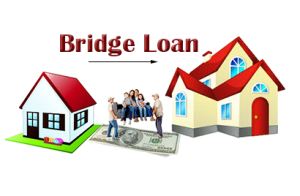What Are Bridge Loans And Can Valley Funding Help Me Get Competitive Pricing?
 Bridge loans are short-term loans. A person or company uses them until they can secure permanent financing. It can also be used to pay an existing obligation. It allows the borrower to meet current obligations by providing immediate cash. They also have relatively high interest rates. In addition, these types of loans are also usually backed by some form of tangible collateral. Collateral can include real estate or the inventory of a business.
Bridge loans are short-term loans. A person or company uses them until they can secure permanent financing. It can also be used to pay an existing obligation. It allows the borrower to meet current obligations by providing immediate cash. They also have relatively high interest rates. In addition, these types of loans are also usually backed by some form of tangible collateral. Collateral can include real estate or the inventory of a business.
Businesses and real estate investors find these types of loans very useful.
How They Work
These types of loans are basically interim financing. They are also known as gap financing. They bridge the gap during times when financing is needed but not yet available. Both individuals and companies can use bridge loans, Valley Funding has the ability to customize these loans for many different situations.
Can They Help Homeowners?
 Homeowners can use these types of loans to purchase a new home while they wait for their current home to sell. Borrowers use the equity in their current home for the down payment on the purchase of a new home while they wait for their current home to sell.
Homeowners can use these types of loans to purchase a new home while they wait for their current home to sell. Borrowers use the equity in their current home for the down payment on the purchase of a new home while they wait for their current home to sell.
These types of give the homeowner some extra time and some peace of mind while they wait.
Typically, lenders only offer real estate bridge loans to borrowers with excellent credit and low DTI ratios. Bridge loans roll the mortgages of two houses together. Thus, giving the buyer flexibility as they wait for their former house to sell. However, in most cases, lenders only offer real estate bridge loans worth 80% of the combined value of the two properties, meaning that the borrower must have significant home equity in the original property or ample cash savings on hand.
In the case of real estate bridge loans, people who still haven’t paid off their mortgage end up having to make two payments: one for the bridge loan, and one for the mortgage until the old home is sold.
Bridge Loans vs. Traditional Loans
Bridge loans typically have a faster application, approval, and funding process than traditional loans. However, in exchange for the convenience, these loans tend to have relatively short terms, high interest rates, and large origination fees.
Generally, borrowers accept these terms because they require fast, convenient access to funds. They are willing to pay high interest rates because they know the loan is short-term and plan to pay it off quickly with low-interest, long-term financing. In addition, most bridge loans don’t have repayment penalties.
What Are the Pros And Cons?
Bridge loans provide short-term cash flow. For example, a homeowner can use a bridge loan to purchase a new home before selling their existing one.
Bridge loans typically have higher interest rates than traditional loans. Also, if you are waiting to sell your home and still have a mortgage, you’ll have to make payments on both loans.
Valley Funding Offers Some Of The Best Terms For Bridge Financing:
1-4 Unit Homes:
- Base Rate: 10.25%
- Min/Max Loan Amount: $100,000 -$10 Million
- Max Refinance LTV: 75%
- Max Purchase Finance LTV: 90%
- Max LTC: 90%
- Minimum FICO: 620
Multi-Family:
- Base Rate: 11.5%
- Min/Max Loan Amount: $250,000 -$10 Million
- Max Refinance LTV: 75%
- Max Purchase Finance LTV: 75%
- Max LTC: 80%
- Minimum FICO: 680
Ground Up:
- Base Rate: 10.5%
- Min/Max Loan Amount: $100,000 -$75 Million
- Max Refinance LTV: 75%
- Max Purchase Finance LTV: 75%
- Max LTC: 85%
- Minimum FICO: 680



